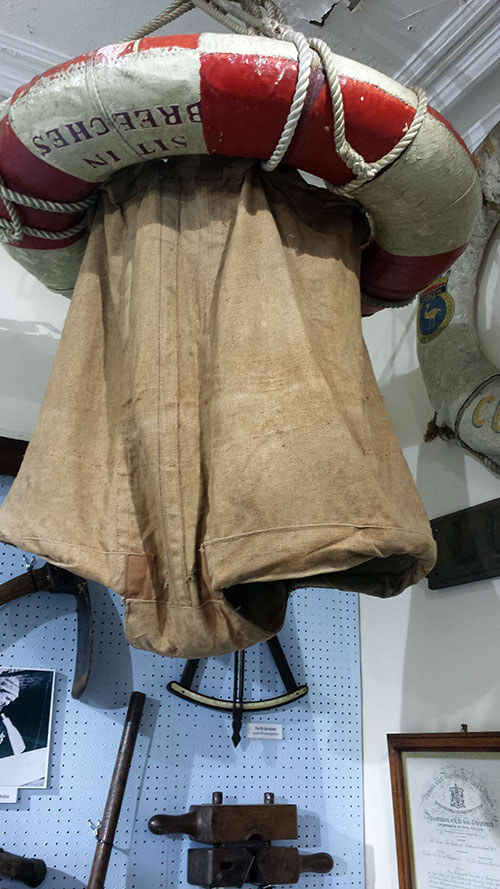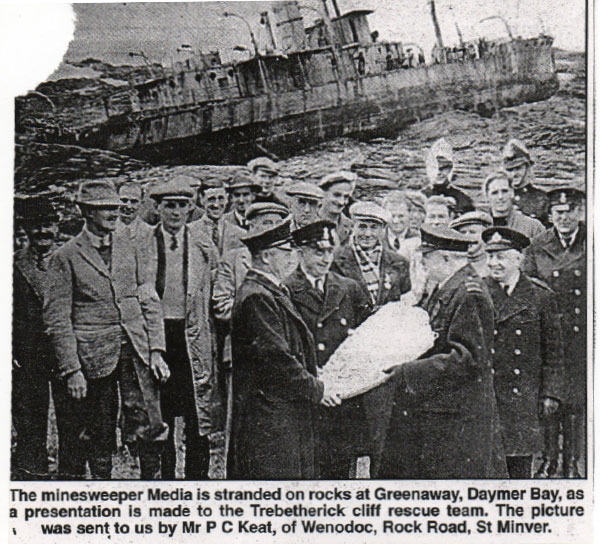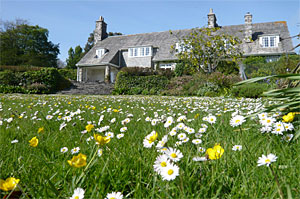The ‘Life Saving Apparatus House’ as it is called on a 1908 map of Trebetherick is next to what were originally coastguard cottages – now Tregawne and Upalong.
Nearly 400 ships are recorded as having got into difficulties in the Camel estuary since 1618, most during the nineteenth century when trade was at its height along the north Cornish coast, including with the flourishing port of Padstow. Both the Doom Bar across the mouth of the estuary, and the rocks off Trebetherick Point and the Greenaway, were serious hazards – long before formal records began. As Brian French observes in his fascinating book Wrecks and Rescues around Padstow’s Doom Bar, a major part of the story of shipwreck is of the saving of ships and seamen’s lives by brave men and women often risking their own lives in the attempt. He describes “the accepted Cornish tradition of wrecking [as] a kind of purposeful beachcombing”, and notes that there is no recorded evidence of any vessel being deliberately “lured to its doom” by false lights, as sometimes claimed.
The first Padstow lifeboat, Mariner’s Friend, was commissioned by the Padstow Harbour Association for the Preservation of Life and Property from Shipwreck, formed in 1829, and built in Padstow. In 1856 the first RNLI lifeboat arrived – the Albert Edward, named after the Duke of Cornwall who had contributed £25 towards her cost. Many RNLI lifeboats have followed, to this day – rowing gigs at the beginning, then steam-powered, now with diesel engines.
The idea of a rocket-propelled line to fire across to a ship in distress and pull it and its crew to safety, was the brainchild of Henry Trengouse, a cabinetmaker from Helston, who had witnessed the demise of HMS Anson in Mounts Bay in 1808 with the loss of over a hundred lives. Trengouse’s design subsequently went through various changes and improvements, but the basic principle stayed the same – once the line reached the ship in trouble and was made fast, a heavier rope with a tail-block and pulley attached could be sent across; this could then either be fastened to the ship to pull it towards the shore, or carry a breeches buoy (like an enormous pair of canvas bloomers), another Trengouse invention, into which crew members climbed for safety while being hauled ashore.

By 1853 there were 120 coastguard stations around the country equipped with rockets. The purpose of the Rocket House was to store the apparatus in readiness to launch a line from the shore to any ship in difficulty. Brian French’s book mentions several occasions when the Trebetherick Rocket Brigade was in action. Most recently, the Brigade rescued the captain and two of the three crew members of HMS Medea on 23rd January 1939; after seven unsuccessful attempts to get a line across, the eighth finally reached the vessel. Her remains can still be seen on the rocks by Trebetherick Point.

- Lodenek Press 2007 ISBN 0946143317

